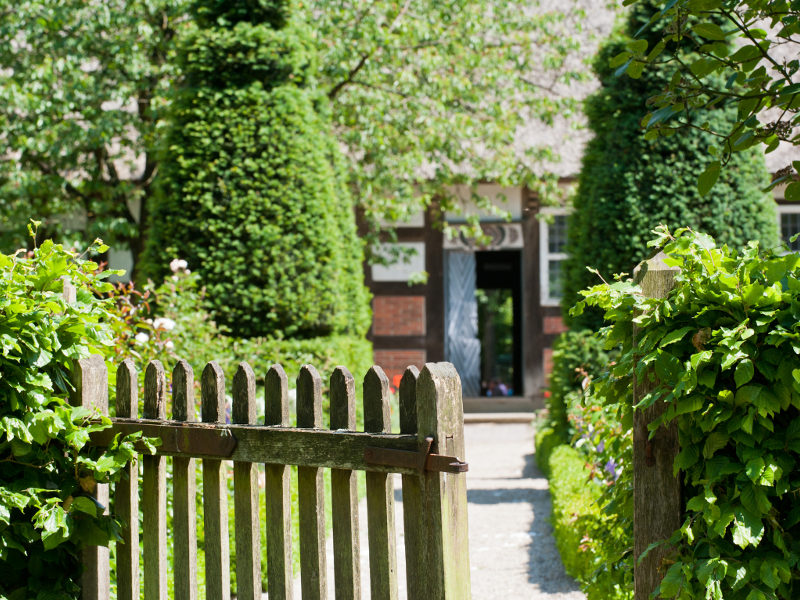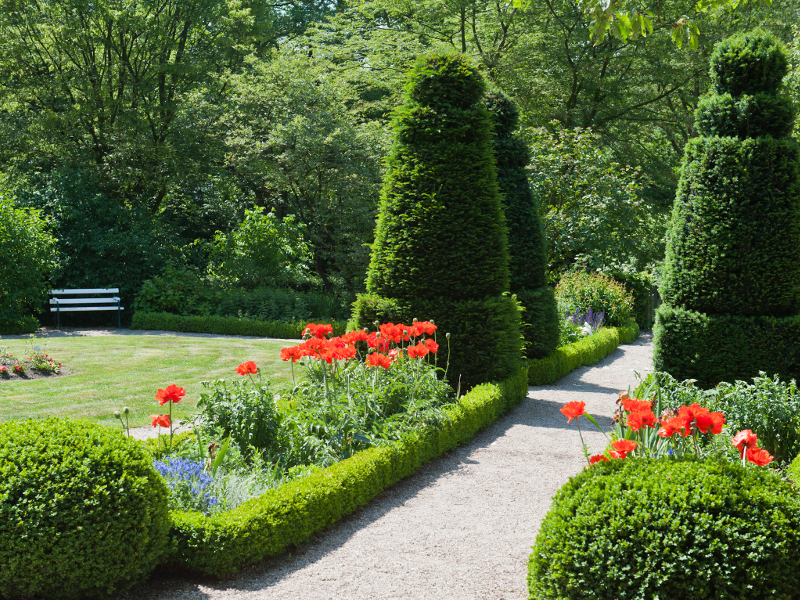
THE ARTLAND VISITORS’ GARDEN
An ornamental garden representative of upper-class farmers
Representative Hospitality
Visitors arrive at the Wehlburg farm from Artland and the Wehlburg garden through an oak-lined alley arranged next to the farmhouse’s driveway. The land in the Artland area in the northern part of the Osnabrück district is particularly bountiful. Strong agricultural results were “driven home” in the second half of the 19th century, thanks to new techniques in farming and animal husbandry.
The garden grounds, which were reconstructed close to the farm according to the reports from 1944, reflect the garden style of the first half of the 20th century. The garden area measures 35 meters by 30. Predominantly, the garden served to represent the farming family to “visitors”, the “green reception hall” in particular.
Many of the design elements that were popular at the time for ornamental gardens can be found here, including: the arbor surrounded by a hedge, the fruit trees along the house wall, the stone grotto with its well-maintained trim oval-shaped lawn.

Careful Design and Avid Maintenance
The side door from the hearth leads to the ornamental garden. Visitors follow the path between two flowerbeds surrounded by boxwood hedges to an intersection with another path. Two Japanese quinces cut in a ball-shape complete the flowerbeds embellished with shrubs decorated with leaves and blooms. Four column-cut yew trees emphasize the middle of the garden area with their dark green leaves. Yew trees from the yew family prefer nutritionally rich soil and were gladly used in gardens, where they could thrive.
Upper-class farmers could find information about the special conditions of locations for garden plants from the gardening literature commonly available at that time, or they could contract a landscaper to design their gardens.
Maintaining the flowerbeds, hedges, lawns and shaped bushes was very intensive work. For the popular Sunday visits, the paths had to be freshly raked and the flowerbeds with roses, hydrangea, shrubs and summer flowers carefully weeded. The ornamental garden served not only a representative purpose, but also as a source of fun and enjoyment.
